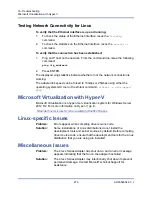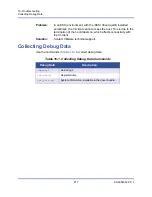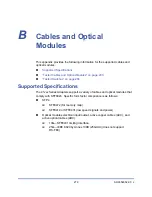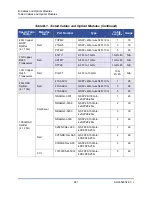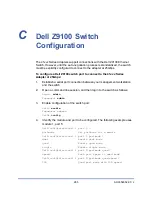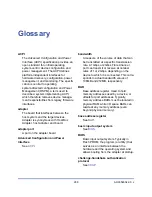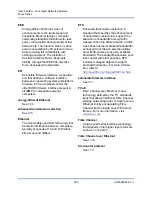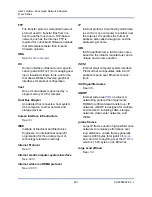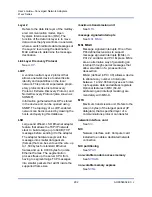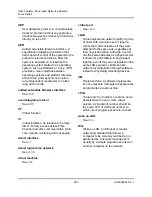
289
AH0054602-00 J
User’s Guide—Converged Network Adapters
41
xxx
Series
CHAP
Challenge-handshake authentication
protocol (CHAP) is used for remote logon,
usually between a client and server or a
Web browser and Web server. A
challenge/response is a security mecha-
nism for verifying the identity of a person
or process without revealing a secret
password that is shared by the two
entities. Also referred to as a
three-way
handshake
.
CNA
See
Converged Network Adapter
QLogic Converged Network Adapters
support both data networking (TCP/IP)
and storage networking (
traffic on a single I/O adapter using two
new technologies: Enhanced Ethernet and
Fibre Channel over Ethernet (
).
data center bridging
See
data center bridging exchange
See
DCB
Data center bridging. Provides enhance-
ments to existing 802.1 bridge specifica-
tions to satisfy the requirements of
protocols and applications in the data
center. Because existing high-performance
data centers typically comprise multiple
application-specific networks that run on
different link layer technologies (Fibre
Channel for storage and Ethernet for
network management and LAN connec-
tivity), DCB enables 802.1 bridges to be
used for the deployment of a converged
network where all applications can be run
over a single physical infrastructure.
DCBX
Data center bridging exchange. A protocol
used by
devices to exchange config-
uration information with directly connected
peers. The protocol may also be used for
misconfiguration detection and for configu-
ration of the peer.
device
, typically a disk drive. Hardware
such as a disk drive, tape drive, printer, or
keyboard that is installed in or connected
to a system. In Fibre Channel, a
target
device
.
DHCP
Dynamic host configuration protocol.
Enables computers on an IP network to
extract their configuration from servers
that have information about the computer
only after it is requested.
driver
The software that interfaces between the
file system and a physical data storage
device or network media.
dynamic host configuration protocol
.
eCore
A layer between the OS and the hardware
and firmware. It is device-specific and
OS-agnostic. When eCore code requires
OS services (for example, for memory
allocation, PCI configuration space
access, and so on) it calls an abstract OS
function that is implemented in OS-specific
layers. eCore flows may be driven by the
hardware (for example, by an interrupt) or
by the OS-specific portion of the driver (for
example, loading and unloading the load
and unload).


